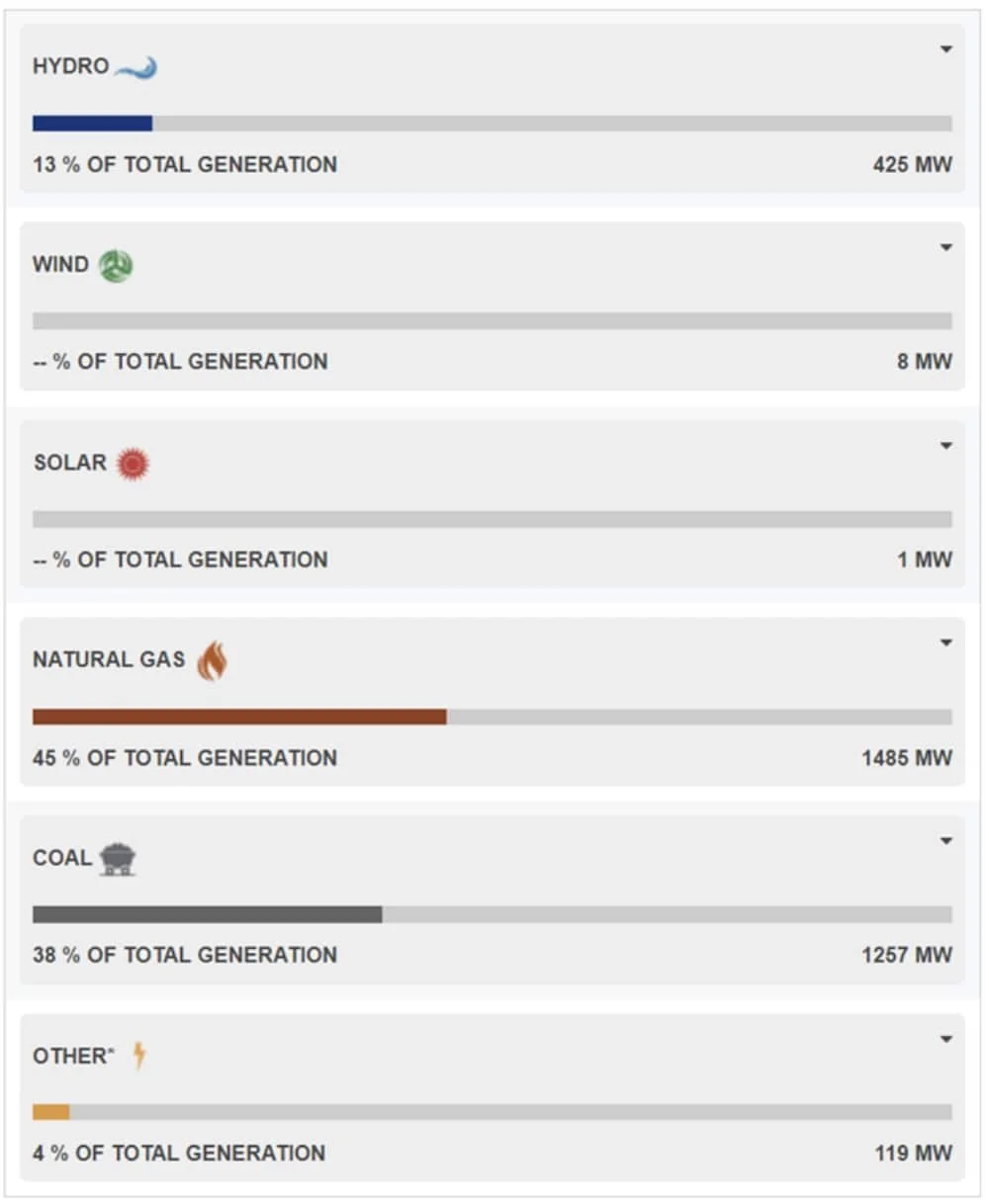SaskPower’s wind generation flatlined on Wednesday, Jan. 11
By Brian Zinchuk
REGINA – SaskPower started posting daily power generation reports in September. And on Jan. 11, wind power has shown one of its lowest outputs, if not the lowest, to date, at 1.3 per cent of nameplate capacity.
SaskPower releases its power generation data at midnight, delayed two days. It does this so that the relevant data is made public, but so that it doesn’t jeopardize its bargaining position on the minute-by-minute energy market. SaskPower also only posts daily averages. In contrast, the Alberta Electric System Operator, responsible for an open electricity market, posts its data minute-by-minute.
Alberta showed at times on Jan. 11 that its wind generation dropped to next to nothing, as low as 19 megawatts out of a nameplate capacity of 3,618 megawatts.
The SaskPower data shows that the same weather system impacted Saskatchewan at the same time, unusual, since there’s usually a one day lag between Alberta and Saskatchewan.
On Jan. 11, SaskPower saw an average of just eight megawatts produced throughout the day, so low that it was considered negligible percentage. That was just 1.3 per cent of the 617 megawatts of installed grid-scale wind power generation in Saskatchewan. And as an average, that means that there were times when wind generation was below eight megawatts.
Similarly, solar power averaged one megawatt throughout the day, out of 30 megawatts of grid-scale solar capacity.
Hydro produced 425 megawatts, making up 13 per cent of total generation. This is a higher number than usual for hydro power. Saskatchewan has 864 megawatts of installed hydro power.
Natural gas put out 45 per cent of total generation for the province, totaling an average of 1,485 megawatts.
Coal was next, at 38 per cent, totaling 1,257 megawatts.
And the remaining four per cent was “other,” coming from small scale solar, biomass, and heat recovery.
Despite the low wind generation, SaskPower produced a total of 3,295 megawatts and exported 116 megawatts. Alberta showed similar numbers being imported from Saskatchewan on that day.

